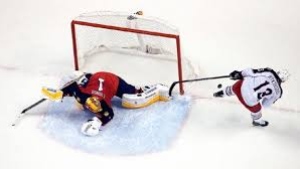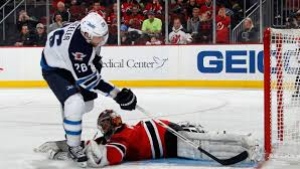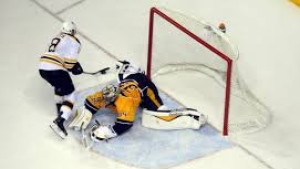Jan 7, 2015
Post 2 Post: Goalies using "seal" for better ice coverage
Presented by
Goalies around the league are using an enhanced "seal" for better ice coverage around the crease. Former NHL netminder Jamie McLennan drops by with Post 2 Post and explains how the goalies are saving shots that might otherwise be goals.

I was watching the World Juniors the other day when Canada's starting goalie Zach Fucale faced a breakaway from Slovakia's Pavol Skalicky. Fucale made a big save with his right pad, and it got me thinking once I saw some of the reaction from people who felt that Zach might have had some luck on the play. With every play there is obviously a layer of luck involved, but it also got me thinking about a move that goaltenders are doing more and more often in today's game.
This summer I attended goaltender guru Mitch Korn's camp (goalie coach of the Washington Capitals, but spent many years in Nashville working with good goalies, most notably Pekka Rinne) to just watch, learn and pick his brain on some of the latest techniques that are being implemented in the game and being worked on rigorously.
He had set up many stations on the ice for young goaltenders to go through, some traditional and some progressive thinking ones to where it came back to identifying the situation and knowing your body as a goaltender. There was one drill in particular that caught my eye, and I see goaltenders using it in certain situations now that gives them an extra extension of ice coverage that is so often needed when it comes down to a game of inches.
Mitch had the goaltenders at the top of their crease, pretending to react to an initial shot or fake shot, and they would go down in the butterfly save position. Now this is when a shooter would try and go around that wall being built, looking for open ice between the pad and the post to jam in the deke. The young goalie would go on his stomach and extend his legs out towards the post to give himself an extension and close off precious space on the ice.
The key would be to make sure your pads were flush on the ice while sealing it so there was no possible way a shooter could jam it in. How the goaltender was able to drive and push his legs back was through arm and upper body motion, almost looking like a forward starfish.
I've seen it used quite a bit this season on breakaways, and more often in shootouts, and it seems like a desperation move but goalies are having success with it because players are in tight just trying to jam past an outstretched leg. In speaking to some of the goalies in the NHL about it, they all have said to me that it's not an ideal position to be in because there is not a lot of sight lines, and you are committed to the play with not much of a recovery. But it has also been a progressive move that when you watch past plays where a goalie is exposed to that same move and there has only been a sliding motion response - not anything with a real plan - this at least allows a thought process for maximum ice coverage in a split second.
There is no guarantee it will work, but the fact that it's being worked on as a desperation move, and one that goaltenders are being very aware of this situation, we are seeing some outstanding saves this year that might have been goals in the past.
Here are some examples:




